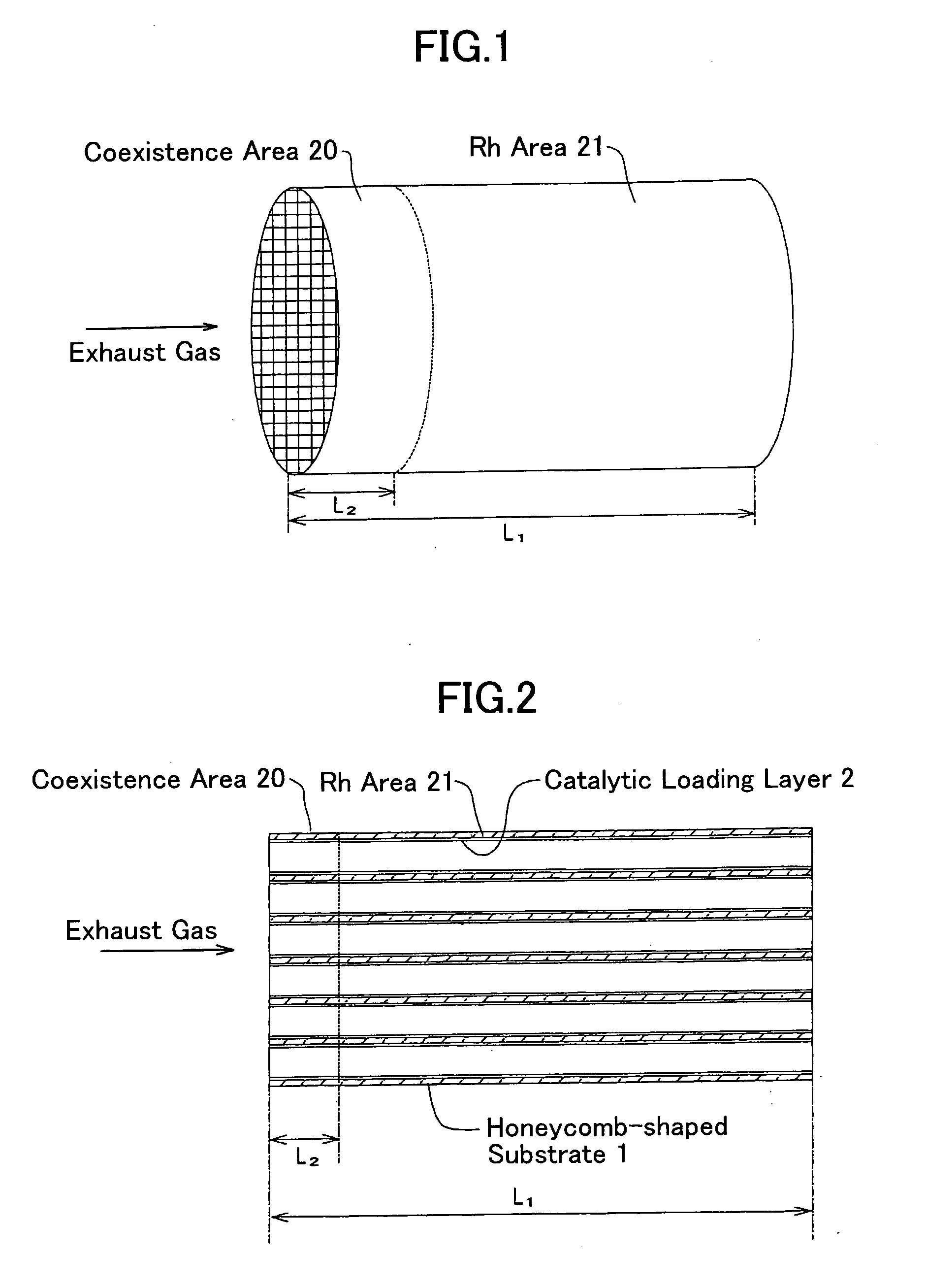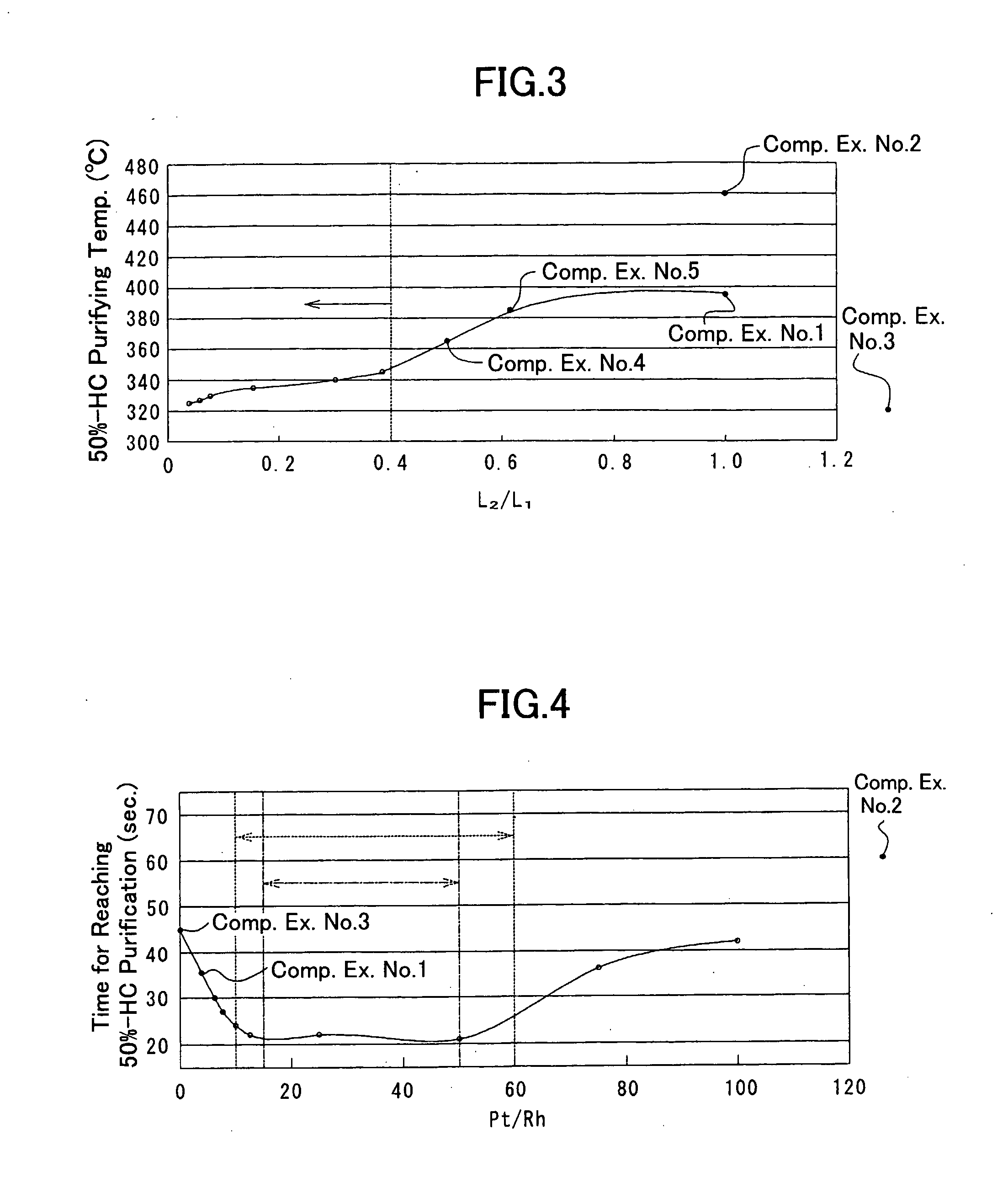Catalyst for Purifying Exhaust Gases
a technology of exhaust gas and catalyst, which is applied in the direction of physical/chemical process catalysts, separation processes, filtration separation, etc., can solve the problems of reducing the activity of pt, reducing the efficiency of rh, and increasing the hc emission, so as to maximize the inhibition of pt and rh deterioration, and efficient utilization of rh
- Summary
- Abstract
- Description
- Claims
- Application Information
AI Technical Summary
Benefits of technology
Problems solved by technology
Method used
Image
Examples
examples
[0035]Hereinafter, the present invention will be described in detail with reference to examples and comparative examples.
example no.1
Example No. 1
[0036]FIGS. 1 and 2 illustrate a catalyst for purifying exhaust gases according to Example No. 1 of the present invention. As illustrated in the drawings, the catalyst comprises a cylindrical honeycomb-shaped substrate 1, and a catalytic loading layer 2. The cylindrical honeycomb-shaped 1 comprises a large number of square-shaped cells, and has an overall length L1 of 130 mm. The catalytic loading layer 2 is formed on the surfaces of the square-shaped cells of the cylindrical honeycomb-shaped substrate 1. Note that a coexistence area 20 is formed over a first range from the exhaust-gas inlet end of the cylindrical honeycomb-shaped substrate 1 toward the exhaust-gas outlet end by a length L2 of 20 mm; and a rhodium area 21 was formed over a second range from the coexistence area 20 toward the exhaust-gas outlet end by a length of 110 mm.
[0037]A production process of the catalyst according to Example No. 1 will be hereinafter described in detail, instead of describing the...
example no.2
Example No. 2
[0041]Except that the coexistence area 20 was formed by a length L2 of 10 mm from the exhaust-gas inlet end and accordingly Pt was loaded in the coexistence area 20 in a loading amount of 20 g with respect to 1 L of the honeycomb-shaped substrate 1, a catalyst for purifying exhaust gases according to Example No. 2 of the present invention was produced in the same manner as Example No. 1. Note that Pt was loaded in an amount of 1.666 g in total.
PUM
| Property | Measurement | Unit |
|---|---|---|
| distance | aaaaa | aaaaa |
| length L1 | aaaaa | aaaaa |
| length L2 | aaaaa | aaaaa |
Abstract
Description
Claims
Application Information
 Login to View More
Login to View More - R&D
- Intellectual Property
- Life Sciences
- Materials
- Tech Scout
- Unparalleled Data Quality
- Higher Quality Content
- 60% Fewer Hallucinations
Browse by: Latest US Patents, China's latest patents, Technical Efficacy Thesaurus, Application Domain, Technology Topic, Popular Technical Reports.
© 2025 PatSnap. All rights reserved.Legal|Privacy policy|Modern Slavery Act Transparency Statement|Sitemap|About US| Contact US: help@patsnap.com



